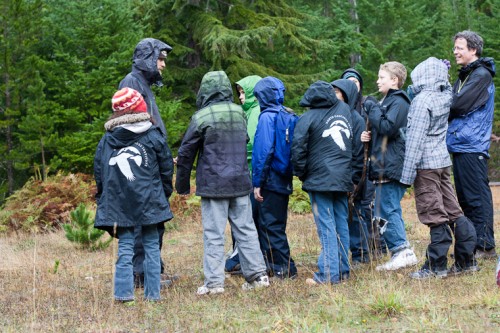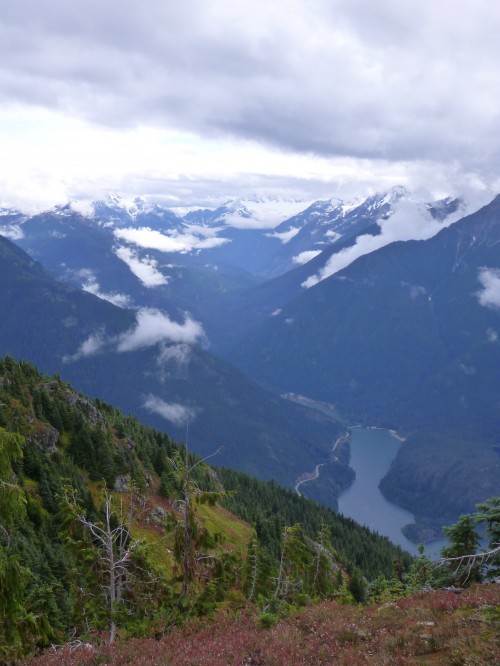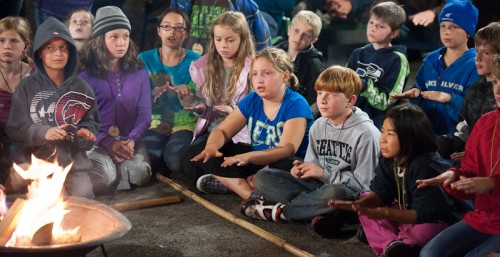Understanding Connection and Community

On a dreary September morning a team of 6th grade students from Seattle’s Westside School upend cobble in Deer Creek while searching for macro-invertebrates – living clues in the mystery of this habitat’s health and the quality of the water cascading downstream. Their giddy grins and eager body language belie the soggy impediments to learning that characterize Pacific Northwest weather this time of year.
Weeks later, on a crisp October afternoon, seven 5th grade students from Bellingham’s Happy Valley Elementary grapple with the concept of a watershed while scanning the snow encrusted peaks which ensnare Diablo Lake. Narrating the life of a raindrop, they trace its course from cloud to ground to river and eventually the sea. Participants delight in the chance to imagine water flowing through their world and passing places they may never go.
 Thunder Arm and the upper Skagit watershed seen from Sourdough Mountain. Photo by Colby Mitchell.
Thunder Arm and the upper Skagit watershed seen from Sourdough Mountain. Photo by Colby Mitchell.
As an educator and lifelong science enthusiast, I am quick to assign my own value to these experiences and the concepts they explicate. For one, these are classroom lessons come to life. I can recall cartoonish diagrams illustrating watersheds projected from transparencies onto my 5th grade classroom wall, but these children skip rocks on the water of Diablo Lake and then, when they leave, gaze out the window of their bus at the same water as it runs the Skagit River toward Puget Sound. Similarly, the 6th grade students from Westside School will spend an afternoon chasing dragonfly nymphs around with a microscope lens while my memories of macro-invertebrates, like the memories of many youth, are seen through the warped glass of a specimen jar.
Apart from the transformative nature of these place-based experiences, there is a deeper value in the concepts that we, as instructors, strive to impart to participants. Ideas like watersheds and ecological connectivity are stepping-stones to the broader skill set of systems thinking. Understanding a place and its connection to other places is a mental exercise whose resultant fitness is transferable to an ever broadening set of challenges looming large on our shared horizon.
On the last day of each Mountain School session participants engage with the big ideas of community. By this point the concept is far from foreign, as each individual has already explored the complexity of Northwest foodwebs and other interdependent systems. What separates this culminating foray into community from previous learning is the place of the individual within the system. The question of where and how you connect to the larger world is one each of us wrestle with in our lives and, in many ways, the way we answer shapes how we create identity for self and community.
 Students gather together for an evening Ranger Program and campfire. Photo by Rick Allen.
Students gather together for an evening Ranger Program and campfire. Photo by Rick Allen.
There are many laudable audience transformations we strive to make during a single Mountain School session. Participants leave with a deeper knowledge of the ecosystem, more comfort in spending time outdoors, and stronger science literacy, but I personally ascribe the deepest value to an individual leaving with a newfound ability to see the connections between things which, until then, seemed so far apart. This is the seed from which deep understanding and lifelong stewardship will grow.
This article is cross-posted to our new Mountain School blog!

